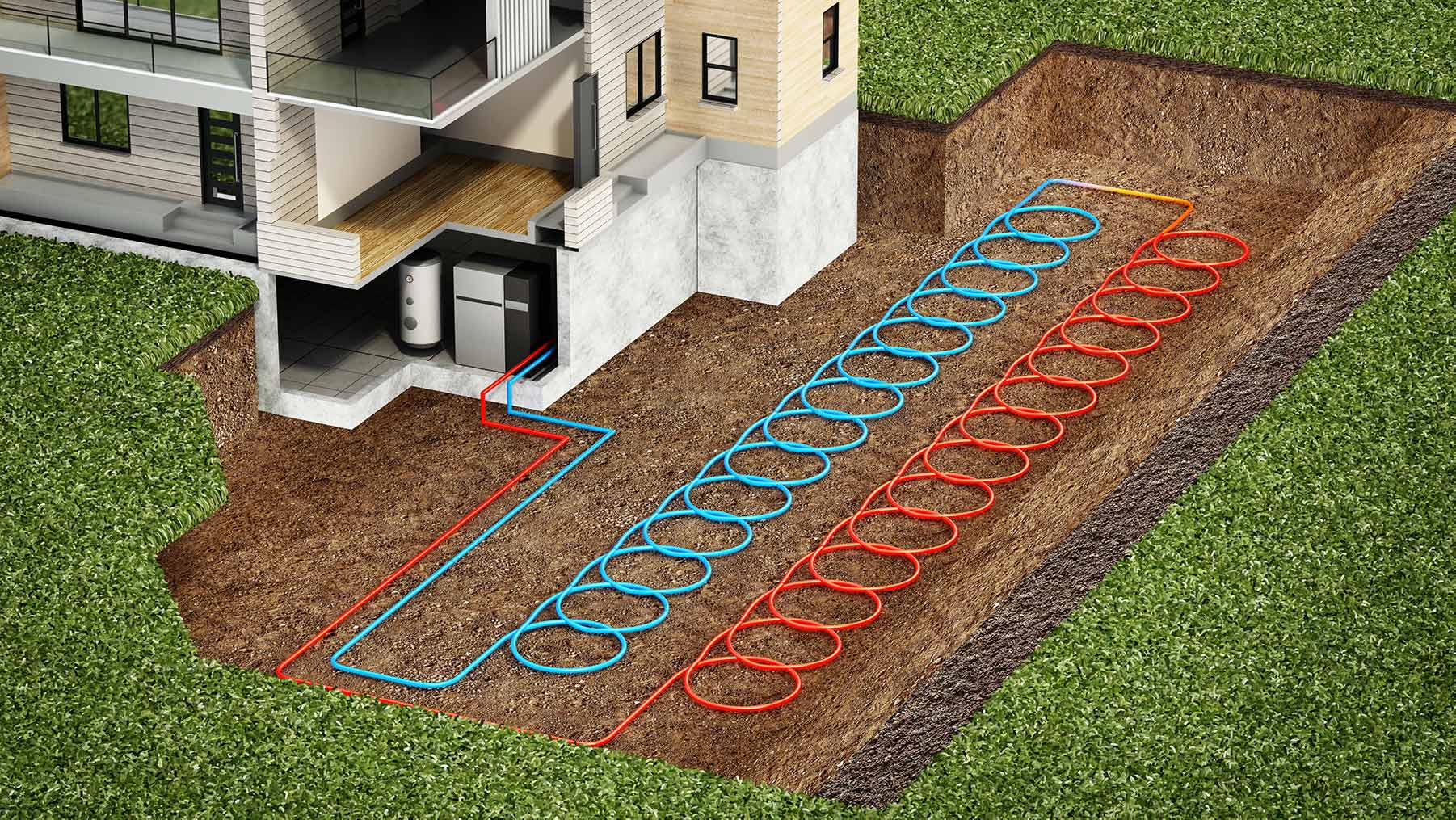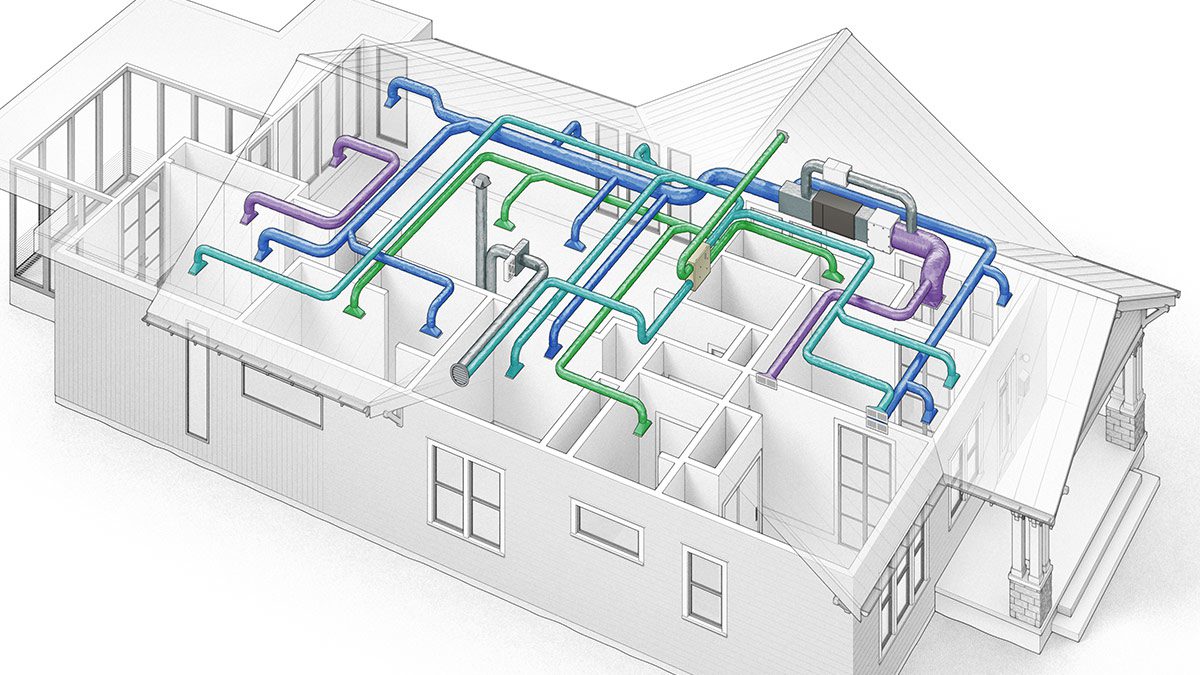A well-maintained home not only provides comfort and security but also contributes significantly to the health and well-being of its inhabitants. One often overlooked yet crucial element that plays a major role in creating a healthy living environment is proper ventilation. Ventilation refers to the process of bringing fresh outdoor air into a building while removing stale, contaminated indoor air. When combined with regular maintenance practices, effective ventilation can enhance indoor air quality, regulate humidity, and create an overall more pleasant and energy-efficient living space. In this article, we’ll explore how you can improve your home by focusing on ventilation and essential maintenance practices, both of which contribute to a cleaner, healthier, and more energy-efficient environment.
1. The Importance of Proper Ventilation
Before diving into the specifics of how to improve your home with ventilation and maintenance, it’s essential to understand why proper ventilation is so important. The primary function of ventilation is to maintain air quality by diluting indoor pollutants and ensuring that moisture levels are kept under control.
Indoor air can become polluted with a variety of substances, including dust, pollen, pet dander, volatile organic compounds (VOCs) from cleaning products or paints, and even mold. Without proper ventilation, these pollutants can accumulate to dangerous levels, affecting the health of those who live in the space. Poor ventilation has been linked to respiratory issues, headaches, fatigue, and even more serious health conditions over time.
Additionally, high humidity levels can contribute to the growth of mold and mildew, both of which can damage your home’s structure and pose health risks. Proper ventilation helps regulate humidity, reducing the likelihood of moisture-related problems. By introducing fresh air into your home and allowing stale air to escape, you can keep the air clean, dry, and comfortable.
2. Types of Ventilation Systems
There are several types of ventilation systems that can be implemented in a home, each with its own advantages. Choosing the right system depends on the size of your home, your climate, and specific needs.
-
Natural Ventilation: This is the simplest form of ventilation and relies on natural forces like wind and temperature differences to move air in and out of a building. Open windows, vents, and skylights are common natural ventilation features. While effective in mild climates, natural ventilation may not provide enough airflow in areas with high pollution or humid conditions.
-
Exhaust Ventilation Systems: These systems are designed to remove indoor air from specific areas of the home, such as kitchens, bathrooms, and laundry rooms, where moisture and pollutants tend to accumulate. Exhaust fans pull stale air out, allowing fresh air to replace it. These systems can be particularly helpful in preventing mold growth and controlling odors.
-
Supply Ventilation Systems: In contrast to exhaust systems, supply ventilation systems bring fresh air into the home, typically from the outside. They are often paired with air filters to ensure the incoming air is free of pollutants. These systems are particularly useful in homes that are tightly sealed, as they help ensure that air exchange occurs regularly.
-
Balanced Ventilation Systems: These systems combine both supply and exhaust ventilation, ensuring that the amount of air coming into the home is balanced with the amount being removed. Mechanical ventilation systems like Energy Recovery Ventilators (ERVs) and Heat Recovery Ventilators (HRVs) are examples of balanced systems. They are particularly efficient in maintaining air quality and energy efficiency by recovering heat or coolness from the outgoing air to precondition incoming air.
3. Maintaining Your Home’s Ventilation System
Proper ventilation is only effective if it’s regularly maintained. A poorly maintained system can lead to reduced airflow, poor air quality, and higher energy costs. Here are some essential maintenance practices that will help keep your ventilation system running smoothly:
-
Clean Air Filters Regularly: Whether you have a furnace, air conditioner, or ventilation system, air filters are essential for trapping dust, allergens, and other particles. Over time, filters can become clogged, reducing airflow and forcing your system to work harder. This can result in higher energy bills and decreased air quality. Depending on the type of filter, it should be replaced or cleaned at regular intervals (typically every 1-3 months).
-
Inspect and Clean Ductwork: Dust, dirt, and debris can accumulate in your home’s ductwork, obstructing airflow and reducing the efficiency of your HVAC system. To maintain optimal ventilation, it’s important to schedule regular inspections of your ducts and have them cleaned when necessary. Duct cleaning can also help remove any buildup of mold or bacteria that could otherwise contribute to poor indoor air quality.
-
Check for Leaks: Leaky ducts or vents can reduce the effectiveness of your ventilation system, making it less efficient at circulating fresh air. Over time, leaks can also increase your energy consumption and drive up utility costs. Perform a visual inspection of your ducts and vents for any signs of leaks or damage. If you find any, seal them promptly with appropriate duct sealant.
-
Ensure Proper Insulation: Insulation plays a key role in your home’s overall energy efficiency, and it’s just as important for your ventilation system. Insulating ducts and ventilation shafts helps ensure that the temperature of the air remains consistent and that energy is not wasted on heating or cooling the air. Proper insulation also helps control humidity levels in your home, reducing the likelihood of condensation and mold growth.
-
Clean and Maintain Fans: Exhaust fans, supply fans, and ceiling fans all play important roles in ventilation. Over time, dust and grime can build up on these fans, affecting their performance. Regular cleaning and maintenance are essential to keep the fans running efficiently. Make sure that the fan blades are free of dust, and check that the motors are functioning properly.
-
Test the System Regularly: Even the best-maintained systems can sometimes develop issues. It’s important to test your ventilation system regularly to ensure it is operating as it should. Pay attention to any changes in airflow, strange noises, or unusual odors, which could indicate a problem that requires professional attention.
4. Improving Ventilation Through Design and Upgrades
If you’re looking to further improve the ventilation in your home, there are several design features and upgrades you can consider:
-
Install Ventilation Grills and Vents: In areas where natural ventilation may be lacking, consider adding ventilation grills and vents to encourage airflow. These can be installed in walls, ceilings, or floors to allow air to move freely throughout the space.
-
Add an Energy Recovery Ventilator (ERV): For homes with tightly sealed, energy-efficient construction, an ERV can be a game-changer. These systems not only provide fresh air but also recover energy from the outgoing air, making them highly efficient for maintaining indoor air quality while minimizing energy loss.
-
Upgrade to a Smart Thermostat: A smart thermostat allows you to optimize ventilation by controlling your system’s fan and temperature settings. With a smart thermostat, you can schedule ventilation times based on your preferences, ensuring that fresh air circulates during specific periods of the day or night.
-
Install Humidity-Control Systems: In regions with high humidity levels, installing a humidity-control system can help keep moisture in check, preventing mold growth and improving overall air quality.
5. The Benefits of Proper Ventilation and Maintenance
Investing in good ventilation and maintaining your home’s system can provide a multitude of benefits:
-
Improved Air Quality: Proper ventilation helps remove pollutants, allergens, and moisture from indoor air, creating a cleaner, healthier environment.
-
Energy Efficiency: Well-maintained ventilation systems operate more efficiently, helping you save on energy costs. Additionally, systems like ERVs can recover energy, making your home more sustainable.
-
Comfort: Good airflow contributes to overall comfort in your home by regulating temperature and humidity, making the space more enjoyable to live in.
-
Reduced Health Risks: Poor ventilation is linked to a range of health issues, including respiratory problems, allergies, and fatigue. Regular maintenance helps ensure that your system is working to protect your health.
Conclusion
A well-ventilated home is not just about comfort—it’s about health, energy efficiency, and long-term sustainability. By understanding the role of ventilation and regularly maintaining your HVAC systems, you can create an environment that supports your well-being while reducing energy consumption and operating costs. Whether you opt for natural ventilation, exhaust systems, or advanced mechanical solutions like ERVs, investing in proper ventilation and maintenance is an investment in a better home. With the right approach, you can enjoy clean, fresh air throughout your living space year-round.




